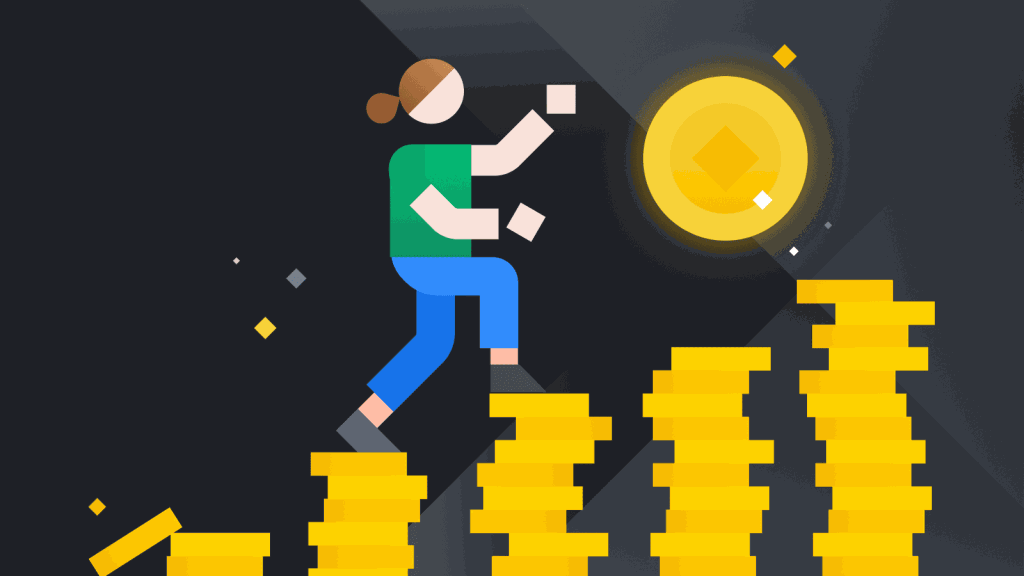
In recent years, the cryptocurrency world has gained significant attention from investors and traders alike. One popular strategy within this realm is margin trading. Margin trading allows traders to borrow funds to amplify their trading positions, potentially leading to higher profits. However, beginners must understand the opportunities and risks of margin trading in crypto markets before diving in headfirst. This blog post will provide a comprehensive guide to help beginners navigate the world of margin trading, covering everything from how it works to risk management strategies.
Understanding Margin Trading
Margin trading is a practice where traders can borrow funds from a platform or exchange to increase their buying power beyond what they currently possess. This allows traders to take larger positions and potentially magnify their returns. Margin trading involves borrowing an asset (such as Bitcoin) or its equivalent value in another currency (often USDT) to open a leveraged position in cryptocurrency markets.
To initiate a margin trade, traders usually deposit collateral into their margin account—the collateral acts as security against potential losses incurred during trades. The amount of leverage the platform provides determines how much one can borrow relative to their collateral.
Benefits of Margin Trading
Amplified Profits:
The primary benefit of margin trading is the ability to amplify potential profits. Traders with limited capital can enter larger positions than they would have otherwise been able to afford, allowing them access to potentially bigger gains.
Short Selling Opportunities:
Margin trading also enables short selling, which involves profiting from price declines by borrowing assets and then selling them at a higher price before repurchasing them at a lower price.
Diversification:
Margin trading allows traders to diversify their portfolios beyond just holding assets, providing more opportunities for profit in different market conditions.
Risks of Margin Trading
While margin trading offers potentially higher profits, it also exposes traders to increased risks. It is crucial for beginners to understand these risks and develop effective risk management strategies before engaging in margin trading.
Increased Losses:
Just as margin trading can amplify profits, it can also magnify losses. If a trade goes against the trader’s position, they may suffer significant losses. Traders must carefully assess risk tolerance and set stop-loss orders to mitigate potential losses.
Liquidation Risk:
Margin traders must maintain a minimum account value or face liquidation risk. If the value of the collateral falls below a specified threshold (known as the maintenance margin), the platform may automatically close out the trader’s position to cover potential losses.
Volatility:
Cryptocurrency markets are notoriously volatile, with prices fluctuating rapidly. While this volatility presents profit opportunities, it also increases the likelihood of sudden price movements that can result in substantial losses.
Stress is caused by not being able to process emotions
Some traders can’t handle the emotion of opening too large a position. Because the volatility in their unrealized profits or losses is too great.
This causes them to make the wrong decision. Letting emotions get in between your trading decisions will cost you money in the long run. If you can’t handle your large volatility, you should start with small leverage.
Margin-related terminology
Margin has several related terms as follows:
- Margin the amount you use to buy the investment
- Leverage: Using leverage is when you increase your investment amount. For example, invest $100 with x100 leverage, i.e., you are investing that $10000. The leverage can be huge, depending on the provider.
- Volume: is the product of (Margin) x (Leverage).
- Position: The position consists of Long (buy) and Short (sell).
- Liquidation: This is the liquidation price. Let’s say you margin Bitcoin. When the price of BTC surpasses the liquidation price, all your invested capital will disappear.
How Margin works
Let’s say you trade margin on an exchange with an entry capital of Btaguru $
Step 1: You perform a technical analysis and give yourself a verdict:
- If you expect the price to rise, you use a long position.
- If you expect the price to fall, you open a short position.
Step 2: Choose your leverage. For example, if you use a leverage of 10, the amount you borrow from the broker is (10-1)*Btaguru = 9*Btaguru.
- The general formula of the borrowed amount is (Leverage-1)*Entry amount.
Step 3: As a result of the above investment, there will be 2 basic cases:
- 1: You want to close the order, or the platform closes the order when the profit level is reached. The result of the trade is that you are profitable. Money is credited to your account
- 2: The price moves against your position. And by the time it reaches the liquidation price, the platform will recover the money you invested. As a result, you lose,
Closing: in Both cases, after the closing order process, you have to pay back the amount you borrowed and will pay additional fees for your borrowing.
Experience in margin trading to hedge risks
Why do I use the word hedging instead of the word that makes a lot of profit? Because many people mistakenly believe that margin makes huge profits, getting rich with it is not difficult. But they were wrong.
With good traders and get results from margin trading. Here, I refer to non-negative profits, not huge profits. They learned a few basic experiences:
- Investment capital is your own capital, which is your own idle capital. Do not use borrowed capital or capital shared by a family or society.
- Leverage: The right leverage if not liquidated very quickly. Professional traders often say: “Instead of entering a $100 order using X100 leverage, you should enter a $1000 order using X10 leverage.”
- Build strict trade rules: You must be serious and value discipline to expect to make money from it.
- Do not let emotions mix (Frustration, revenge,…): Set a profit; to that extent, it is best to take a break from playing. Or continue playing, but the leverage is extremely small. If a long/short order loses, close the machine to rest and entertain your mind.
- …
Choosing a Margin Trading Platform
Selecting a reliable and reputable margin trading platform is crucial for a beginner’s success in crypto markets. Here are a few factors to consider when choosing a platform:
Security Measures:
Ensure that the platform you choose has robust security measures in place to protect your funds and personal information from hacking attempts and other unauthorized access.
Liquidity:
A platform with high liquidity ensures faster execution of trades at desired prices and reduces slippage during volatile market conditions.
Range of Supported Cryptocurrencies:
Different platforms offer varying options for margin trading cryptocurrencies. Choose one that supports a wide range of cryptocurrencies you are interested in trading.
User Experience:
A user-friendly interface and intuitive features make it easier for beginners to navigate and execute trades effectively.
Developing an Effective Margin Trading Strategy
Margin trading requires careful planning and strategy implementation. Here are a few tips to consider when formulating your margin trading strategy:
Research and Analysis:
Thoroughly research the cryptocurrencies you wish to trade and analyze market trends before entering any positions. Stay informed about news and events that might impact prices.
Set Realistic Goals:
Establish realistic profit targets and risk limits for each trade. It is important not to get carried away by emotions or greed.
Use Stop-Loss Orders:
Implementing stop-loss orders helps limit potential losses by automatically closing out a position if it reaches a predetermined price level.
Start Small:
As a beginner, it is advisable to start with smaller trades to gain experience and gradually increase position sizes as you become more comfortable with margin trading.
Conclusion:
Margin trading can be an exciting and potentially lucrative strategy in crypto markets. However, beginners must approach it cautiously and thoroughly understand the opportunities and risks involved. By grasping the fundamental concepts, conducting thorough research, implementing effective risk management strategies, and choosing a reliable platform, beginners can confidently navigate the world of margin trading. Remember, continuous learning, practice, and disciplined decision-making will contribute significantly to long-term success in margin trading.


